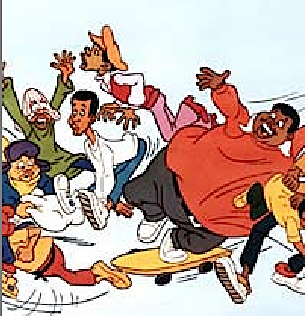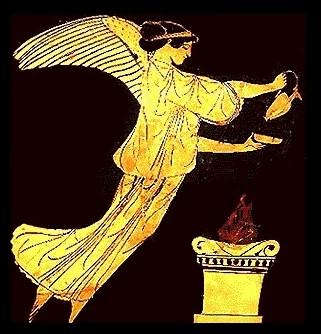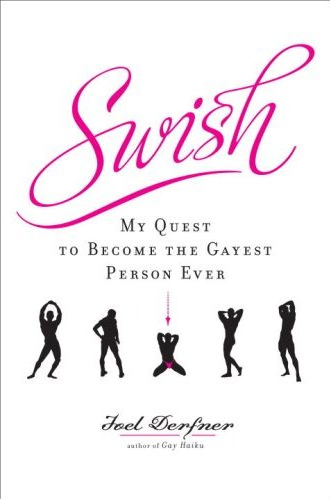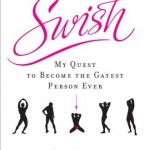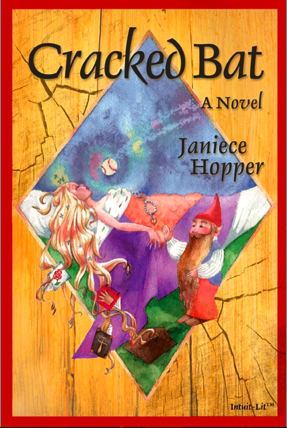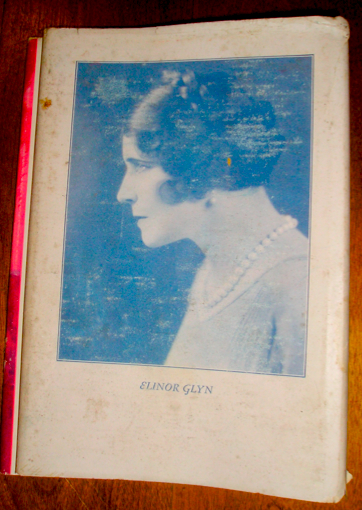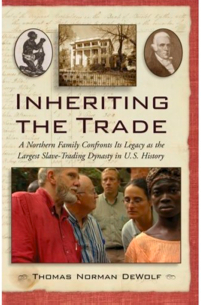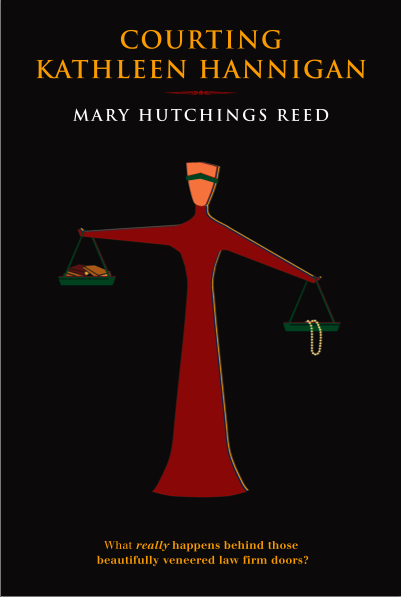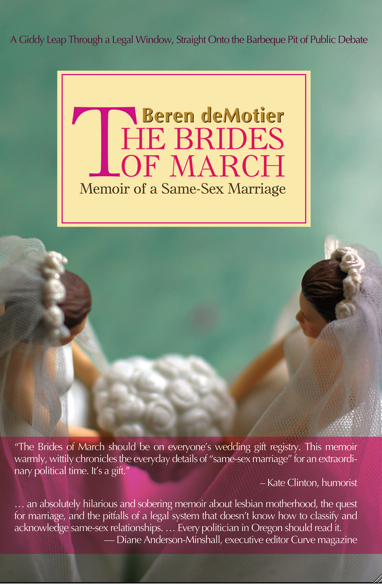Did I overwhelm you yesterday, by cramming everything you always wanted to know about book categories but were afraid to ask into a single post? I hope not; I’ll try to take my Building Blocks of the Pitch series a touch more slowly from here on out. And, as always, if any of you out there find what I’m suggesting confusing, I would MUCH rather that you ask me about it BEFORE you follow my advice than after.
I’m funny that way.
What I hope none of you will do is simply zone out during this series because you aren’t planning on pitching anytime soon. Believe it or not, learning how to give a verbal pitch well will improve your ability to write query letters and synopses — all three are built, after all, out of the same essential components, based upon a firm understanding of how the industry does and doesn’t work.
So as Fat Albert used to say, if you’re not careful, you might learn something before it’s done.
Yesterday, I introduced (quickly) the first building block of a successful pitch: the book category, the terminology that enables everyone in the industry to know instantly which presses, editors, and agents might be interested in a particular book.
Being able to describe one’s book in market terms is as essential for a killer pitch as for an effective query letter. As much as writers seem to adore describing their work as, “Well, it’s sort of a romance, with a thriller plot, a horror villain, and a resolution like a cosy mystery,” agents and editors tend to hear ambiguous descriptions as either waffling, a book’s not being ready to market, or the author’s just not being very familiar with how the industry actually works. The more specific you can be about your book’s category, the more professional you will sound.
Which means, incidentally, that within the pitch setting, you might want to avoid those ever-popular terms of waffle, my writing defies categorization, my book is too complex to categorize, my book isn’t like anything else out there, no one has ever written a book like this before, and it’s sort of autobiographical. Which, translated into industry-speak, come across respectively as I’m not familiar with how books are sold in North America, I don’t know one book category from another, I’m not familiar with the current market in my area of interest — which means, Mr. Agent, that I haven’t been buying your clients’ work lately, I’m not familiar with the history of the book market in my area, and I was afraid people would hurt me if I wrote this story as a memoir.
Hey, I just report the rules; I don’t make ‘em up.
My point is, walking into a pitch meeting NOT knowing how the industry would categorize your book is not smart strategy. It may feel like writing your own tombstone, but commit to a category and state it at the BEGINNING of your pitch, rather than making your hearer guess.
Why? Well, among other things, being up front about it will permit your pitch-hearer to listen to the CONTENT of your pitch, rather than thinking the whole time, “Well, that sounds sort of like a romance, with a thriller plot, a horror villain, and a resolution like a cosy mystery. How on earth am I going to categorize that?”
‘Nuff said, I think.
So let’s assume that you have in hand that vital first building block, your book’s category. This handy tool will not only feature prominently in your pitch, but also on the title page of your manuscript and in the first few lines of your query letter. (If it’s news to you that your title page should include these elements — or if it’s news to you that your manuscript should include a title page at all — please see the YOUR TITLE PAGE category at right before you even CONSIDER submitting any material to an agent or editor.)
Next, I shall be moving on to a more sophisticated marketing tool, one that is not technically required, but will instantly stamp your pitch/query as more professional. I refer, of course, to identifying your target market.
Or, to be more precise, to preparing a concise, well-considered statement of your book’s target market, including an estimate of how many potential buyers are in that demographic group. And yes, Virginia, that can mean talking — dare I say it? — statistics.
Intimidating news to those of us who vastly preferred the verbal section of the SAT to the math, isn’t it? (Actually, I was always good at math, but I suppose my high school calculus teacher didn’t nickname me Liberal Arts Annie for nothing. Still, there’s no fool like a fool playing hooky, so let’s press on.)
I’m not talking about publishing statistics here; I’m talking about easy-to-track-down population statistics — and that comes as a big surprise to practically every aspiring writer who has ever taken my pitching class. “Why,” they almost invariably cry, “shouldn’t I go to the trouble to find out how many books sold in my chosen category last year? Wouldn’t that prove that my book is important enough to deserve to be published?”
Well, for starters, any agent or editor would already be aware of how well books in the categories they handle sell, right? Mentioning the Amazon numbers for the latest bestseller is hardly going to impress them.
Instead, it makes far more sense to discover how many people there are who have already demonstrated interest in your book’s specific subject matter. But before I talk about how one goes about doing that, let’s discuss what a target market is.
Simply put, the target market for a book is the group of people most likely to buy it. It is the demographic (or the demographics) toward which your publisher will be gearing advertising.
Or, to put it another way, who out there needs your book and why?
I know these are not the first questions we writers like to ask ourselves, but if you pictured your ideal reader, who would it be? What books does this reader already buy? Who are her favorite living authors, and what traits do your books share with those that would draw your ideal reader to both?
While we’re at it, who represents her favorite authors, and would those agents be interested in your book?
Do I hear some disgruntled muttering out there? “I’m not a marketer; I’m a writer,” I hear some of you say. “How the heck should I know who is going to buy my book? And anyway, shouldn’t a well-written book be its own justification to anyone but a money-grubbing philistine?”
Well, yes, in a perfect world — or one without a competitive market. But neither is, alas, the world in which we currently live. As nice as it would be if readers flocked to buy our books simply because we had invested a whole lot of time in writing them, no potential book buyer is interested in EVERY book on the market, right? There are enough beautifully-written books out there that most readers expect to be offered something else as well: an exciting plot, for instance, or information about an interesting phenomenon.
To pitch or query your book successfully, you’re going to need to be able to make it look to the philistines like a good investment.
And before anybody out there gets huffy about how the industry really ought to publish gorgeously-written books for art’s sake alone, rather than books that are likely to appeal to a particular demographic, think about what the pure art route would mean from the editor’s POV: if she can realistically bring 4 books to press in the next year (not an unusually low per-editor number, by the way), how many of them can be serious marketing risks, without placing herself in danger of losing her job?
Do Fat Albert and the Cosby kids really need to break down these issues into a song for the likely outcome here to be clear?
It’s very much worth your while to give some thought to your target readership BEFORE you pitch or query, so you may point it out to that nervous editor or market-anxious agent. Try to think about it not as criticism of your book, but as a legitimate marketing question: who is going to read your book, and why?
As with choosing a book category, it pays to be specific. For one thing, it will make you stand out from the crowd of pitchers.
Why? Well, to put it charitably, the vast majority of fiction writers do not think very much about the demographics of their potential readers — which is to say, most don’t seem to consider the question at all. (A luxury, I might point out, that NF writers do not have: NF book proposals invariably have an entire SECTION on target audience. No one ever seems to think that is incompatible with the production of art.) Or when fiction writers are forced to answer the question, they identify their readership in the broadest possible terms.
PLEASE, for your own sake, avoid the oh-so-common trap of the dismissive too-broad answer: women everywhere will be interested in this book; every American will want to buy this; it’s a natural for Oprah. Even in the extremely unlikely event that any of these statements is literally true in your book’s case, agents and editors hear such statements so often that by this point in human history, they simply tune them out.
Especially the one about Oprah.
Seriously, if I had a dime for every time I have heard it, I would own my own publishing house — and the island upon which it stood, the fleet of sailboats to transport books from there to market, and a small navy’s worth of shark-wranglers to keep my employees’ limbs safe while they paddled between editing projects.
Why do sweeping generalizations tend to be ineffectual, you ask? Well, agents and editors do have quite a bit of practical experience with book marketing: they know for a fact that no single book will appeal to EVERY woman in America, for instance. Since they hear such claims so often, after awhile, they just block out all hyperbole.
Coming from authors, that is. Anyone who has ever read a marketing blurb knows that they’re not all that shy about using hyperbole themselves.
Make sure your target market are believable — but don’t be afraid to use your imagination. Is your ideal reader a college-educated woman in her thirties or forties? Is it a girl aged 10-13 who doesn’t quite fit in with her classmates? Is it an office worker who likes easy-to-follow plots to peruse while he’s running on the treadmill? Is it a working grandmother who fears she will never be able to afford to retire? Is it a commuter who reads on the bus for a couple of hours a day, seeking an escape from a dull, dead-end job?
While these may sound like narrow definitions, each actually represents a very large group of people, and a group that buys a heck of a lot of books. Give some thought to who they are, and what they will get out of your book.
Or, to put a smilier face upon it, how will this reader’s life be improved by reading this particular book, as opposed to any other? Why will the book speak to him?
Again, be as specific as you can. As with book category, if you explain in nebulous terms who you expect to read your book, you will simply not be speaking the language of agents and editors.
If you want to make their lives even easier, throw in some concrete numbers, showing just how big your target market actually is — it will make it MUCH easier for them to sell the book to higher-ups. Sales and marketing departments expect agents and editors to be able to speak in numbers — and no matter how much the editors at a publishing house love any given book, they’re unlikely to make an actual offer for it unless the sales and marketing folks are pretty enthused about it, too.
Doesn’t it make sense to make sure the agent and editor fighting for your book have that demographic information at their fingertips, when it’s relatively easy for you to put it there?
Not yet convinced that it would behoove you to go to the additional effort? Let me give you a concrete example of what can happen if a writer is vague about her target market’s demographics.
Aspiring writer Suzette has written a charming novel about an American woman in her late thirties who finds herself reliving the trauma of her parents’ divorce when she was 12. Since the book is set in the present day, that makes her protagonist a Gen Xer, as Suzette herself is. Let’s further assume that like the vast majority of pitchers, she has not thought about her target market before walking into her appointment with agent Briana.
So she’s stunned when Briana, the agent to whom she is pitching, says that there’s no market for such a book. But being a bright person, quick on her feet, Suzette comes up with a plausible response: “I’m the target market for this book,” she says. “People like me.”
Now, that’s actually a pretty good answer — readers are often drawn to the work of writers like themselves — but it is vague. What Suzette really meant was, “My target readership is women born between 1964 and 1975, half of whom have divorced parents. Just under 12 million Americans, in other words — and that’s just for starters.”
But Briana heard what Suzette SAID, not what she MEANT. Since they’ve just met, how reasonable was it for Suzette to expect Briana to read her mind?
The result was that Briana thought: “Oh, God, another book for aspiring writers.” (People like the author, right?) “What does this writer think my agency is, a charitable organization? I’d like to be able to retire someday.”
And what would an editor at a major publishing house (let’s call him Ted) conclude from Suzette’s statement? Something, no doubt, along the lines of, “This writer is writing for her friends. All four of them. Next!”
Clearly, being vague about her target audience has not served Suzette’s interests. Let’s take a peek at what would have happened if she had been a trifle more specific, shall we?
Suzette says: “Yes, there is a target market for my book: Gen Xers, half of whom are women, many of whom have divorced parents.”
Agent Briana thinks: “Hmm, that’s a substantial niche market. 5 million, maybe?”
Sounding more marketable already, isn’t it?
But when Briana pitches it to editor Ted this way, he thinks: “Great, a book for people who aren’t Baby Boomers. Most of the US population is made up of Baby Boomers and their children. Do I really want to publish a book for a niche market of vegans with little disposable income?”
So a little better, but no cigar. Let’s take a look at what happens if Suzette has thought through her readership in advance, and walks into her pitch meetings with Briana and Ted with her statistics all ready to leap off her tongue.
Suzette says (immediately after describing the book): “I’m excited about this project, because I think my protagonist’s divorce trauma will really resonate with the 47 million Gen Xers currently living in the United States. Half of these potential readers have parents who have divorced at least once in their lifetimes. Literally everybody in that age group either had divorces within their own families as kids or had close friends that did. I think this book will strike a chord with these people.”
Agent Briana responds: “There are 47 million Gen Xers? I had no idea there were that many. Let’s talk about your book further over coffee.”
And editor Ted thinks: “47 million! Even if the book actually appealed to only 1% of them, it’s still a market well worth pursuing.”
As scary as it may be to think about, if you are going to make a living as a writer, you will be writing for a public. In order to convince people in the publishing industry that yours is the voice that public wants and needs to hear, you will need to figure out who those people are, and why they will be drawn toward your book.
If you don’t want to make a living at it, of course, you needn’t worry about marketing realities; writing for your own pleasure, and that of your kith and kin, is a laudable pursuit. But if you want total strangers to buy your work, you are going to have to think about marketing it to them.
As I have said before, and shall no doubt say many times again: art for art’s sake is marvelous, but an author’s being cognizant of the realities of the market renders it far more likely that her book is going to be successful.
And, to paraphrase Fat Albert, those who don’t do their homework are not as likely to succeed as often as those who do.
Tomorrow, I shall talk about how to dig up specifics about your target demographic relatively painlessly. In the meantime, don’t play hooky, try not to assume, and keep up the good work!
